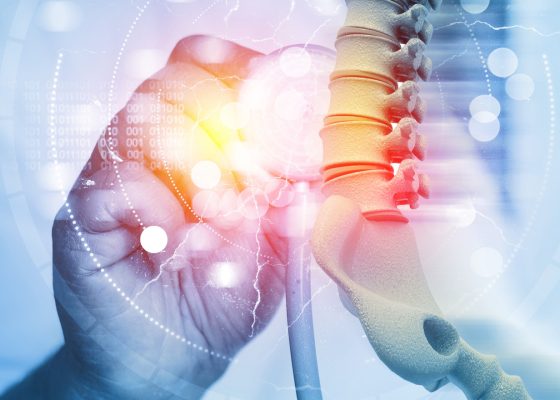Suspending use of the devices entirely would constitute ‘extreme discrimination’ but regular monitoring and reporting is vital.
Spinal cord stimulators should remain on the Prostheses List while “further action” is undertaken to strengthen regulation and monitoring of the devices, an independent report by Health Research Consulting has found.
The post-Listing review was commissioned by the DoHAC to assess the cost-effectiveness and clinical efficacy of spinal cord stimulators after a Four Corners investigation revealed rates of surgical reintervention for the devices were around 10 times higher than for knee replacements.
Based on a “pragmatic” review of existing literature and key documents supplied by the DoHAC, the review found evidence regarding the long-term effects and risks of spinal cord stimulation was uncertain despite the large body of clinical trials conducted on the devices.
The authors recommended that the Medical Devices and Human Tissue Advisory Committee (MDHTAC) maintain the listing of the devices on the Prostheses List while also implementing a number of “critical actions” to increase regulatory oversight and improve data monitoring on SCS devices.
These included the development of high-quality clinical guidelines regarding SCS implantation incorporating communication from MSAC and MDHTAC to ensure SCS device listings remained in line with recommended clinical practice, and the establishment of a national data registry to increase monitoring.
Speaking to Health Services Daily Pain Australia CEO Giulia Jones said while improving oversight over spinal cord stimulation was vital, it was equally important to maintain access to the devices for patients who needed them.
“For that small cohort – less than 2% of people [receiving treatment] for chronic pain – it is an appropriate treatment, including some people for whom this treatment has reversed their pain, and other people who were looking at living in nursing home, or the like, and who’d been able to go on with their lives,” she said.
“This is a tiny cohort who have tried every other treatment and it is only for neuropathic pain, so the argument they’re making that people are implanting these devices for every condition under the sun is absolutely untrue.
“Around 1500 devices are implanted a year in Australia compared to 10s of thousands of hips and knees. Nobody’s saying we shouldn’t be implanting knees or hips, but people feel free to discriminate against those with chronic pain because their condition is less visible.”
According to Ms Jones, more action needed to be taken to make access to SCS devices more equitable by increasing availability through the public sector, with data collected by Private Health Australia indicating at least 90% of stimulators were implanted in the private sector.
“It’s a no-brainer that this device should continue to be offered. In fact it would be good if it was offered in public clinics as well, they’re very rarely offered in the public [system],” Ms Jones said.
“The feedback I have from some of the pain doctors is that they have known of people who’ve had limbs amputated because of the pain they were in, rather than have a device which is not available to them in a public clinic.
“That to me seems a great shame.”
In terms of improving monitoring of SCS device performance, Ms Jones reiterated the review’s recommendation for an independent national registry responsible for collecting and analysing data on all implanted devices.
“What we would like to see done is a National Registry of all implanted devices, and we would like that to be hosted by university so that it’s independently hosted,” Ms Jones said.
“We would like to see industry and government put money into that, so that it’s not purely one or the other, [and] we’d like it to report at least once a year … the sector has been working towards it for a couple of years now, [so] 12 months would be long enough to get it off the ground.
“There is a round of funding that the MRFF has going in now for registries and there will be an application for a spinal cord stimulator registry as part of that.
“It’s not purely a health department ministerial decision, it is a slightly separate process, [but] hopefully it can be the start of the funding through that.
“It’s important data, otherwise all we have to rely on is individual doctors reporting their experiences and their patients experiences and Medicare data about different procedures.
“It also means that if there any implanters who are implanting more than usual or who are incentivising imperfect, clinical processes, or whose outcomes are particularly bad, it will become very obvious.
“One of the best things we can do to protect consumers is to have a really good registry.”



